Donna Gholson Cook
Articles
I have been interested in the Old West for as long as I can remember. My main focus is Texas in the early days, and I have acquired a good collection of research materials in my own library.
One of my articles can be found in the December 2008 issue of "Wild West" magazine, "Where Surveyors Fought Like Soldiers."
https://www.historynet.com/battle-creek-texas-where-surveyors-fought-like-soldiers.htm
An article in "Point of Beginning" magazine, December 1, 2004, described the same incident but focusing on surveying land in early Texas, "Divided by Determination."
http://www.pobonline.com/articles/85410-divided-by-determination
I wrote the following article after taking a trip to the areas where my earlier Gholson ancestors lived. This article appeared in "Heart of Texas Records," Vol. 62, No. 3, Fall 2019, the quarterly publication of Central Texas Genealogical Society, pages 9-13.
Through Virginia and Kentucky
October 17-22, 2005
If you’re reading this, there is a good chance that you have been bitten by the genealogy bug. I have been fascinated since childhood by stories of my father's family and their cowboy days in early Texas. I also knew that my Gholson ancestors were among the earliest American colonists but did not realize until recently that they were closely connected with some of the major events in American history. In my research, I discovered early Virginia land grants from King George II, a mention of Anthony Gholson in a letter written by George Washington, and connections between Anthony and Patrick Henry's relatives.
About 25 years ago, I began to seriously research my ancestors and compile the information into my first book, Gholson Road: Revolutionaries and Texas Rangers, published in 2004. While researching the book, I visited and photographed sites in Texas and Louisiana. One additional thing that I had always wanted to do was to take a trip through Virginia and Kentucky to trace the migration path of my Gholson ancestors and the ancestors of thousands of other Texans.
In connection with an astronomy trip to Boston with my hubby Lew, I cooked up a plan to visit some Gholson ancestral sites and asked him to accompany me on a six-day road trip beginning at Jamestown, site of the first European colony in Virginia. Dr. Theodore Gulston, a London physician related to the first Gholsons who came to America, was one of the investors in the Virginia Company of London, which financed the first Virginia colonies. In 1616, visitors to Dr. Gulston's London home from Virginia included Sir Thomas Dale and Uttomakin, counsellor to Powhatan, the father of Pocahontas.
Our next stop was St. John's Church in Richmond, Virginia. I have long been fascinated with Patrick Henry and his speech that lit the fire of the American Revolution, and it was a thrill to visit the actual church where the 2nd Virginia Convention was held. The church building has been expanded several times from the tiny original building, which is the central portion of the first photo below. In the second photo, the door is the door through which the delegates passed.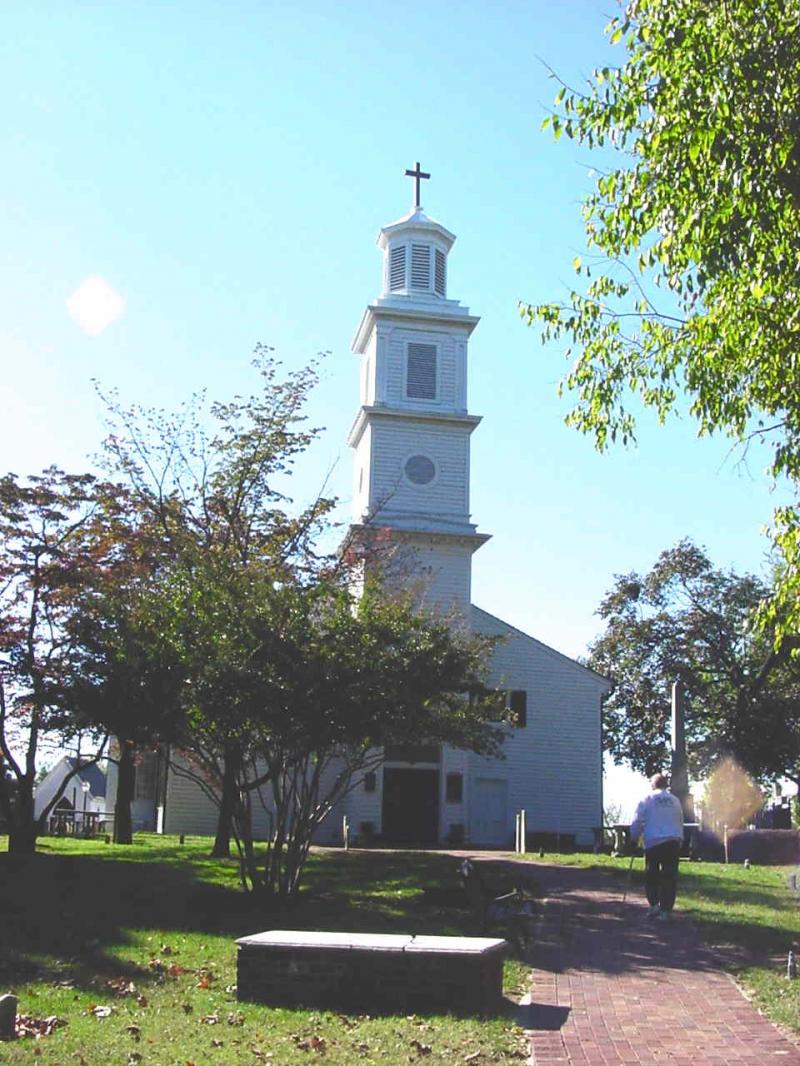
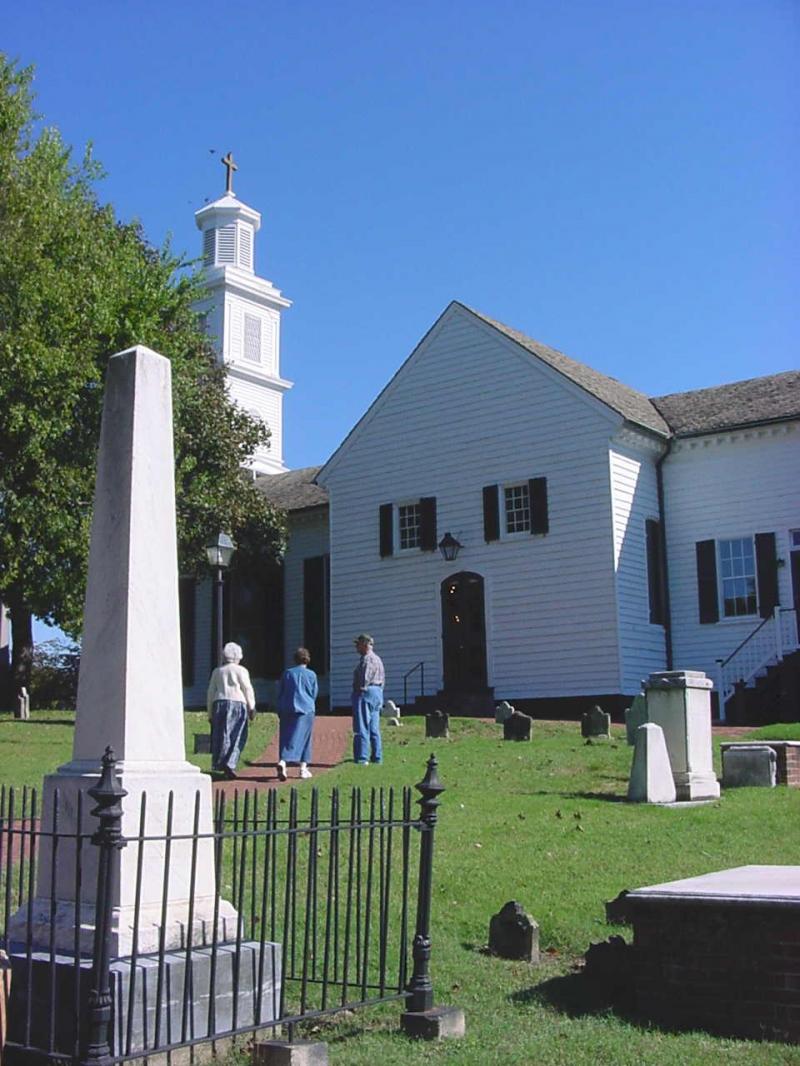
From Richmond, we drove north to the Piedmont section of Virginia, north of the present Lake Anna on the Orange-Spotsylvania county line. In 1728, Anthony Gholson was given a grant of 1000 acres by King George II (along the present Virginia State Highway 601), and his sons William and Anthony, Jr. were jointly given an adjacent 1000 acres. William’s son, also named Anthony, rented land from George Washington in Frederick County from 1768-1786. Washington, in a letter to his brother, referred to Anthony's failure to pay his rent for several years, prompting my husband to tell me that I qualify for the DAR--Deadbeats of the American Revolution!
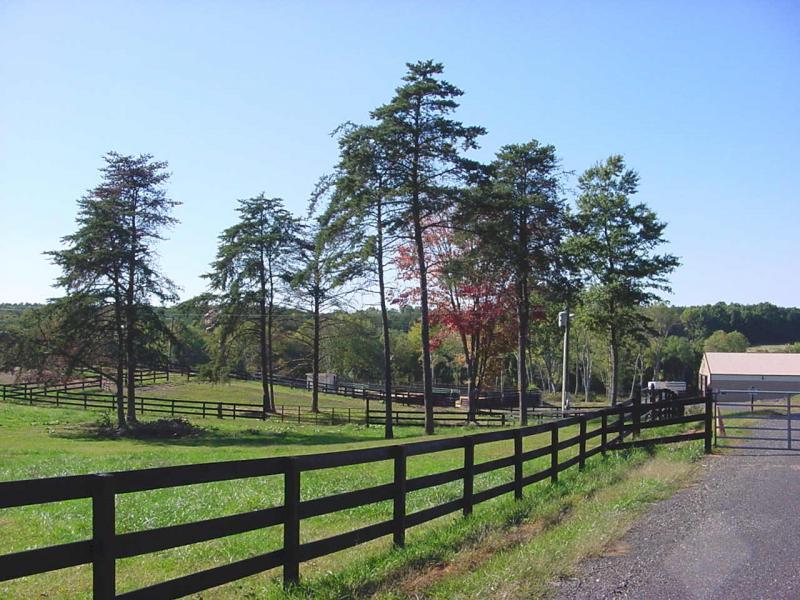
Patrick Henry is sometimes referred to as The Voice and George Washington as The Sword of the American Revolution. Thomas Jefferson, another contemporary of Anthony Gholson, is sometimes called The Pen. A trip through Virginia would not be complete without a stop at Charlottesville to visit Monticello, Jefferson's home (below). The house is a construction marvel and the location is absolutely gorgeous. Thomas Jefferson was a true genius who spent every moment of his life trying to improve the world around him, keeping meticulous records of everything he did and everything he observed, including plant studies from his large garden.
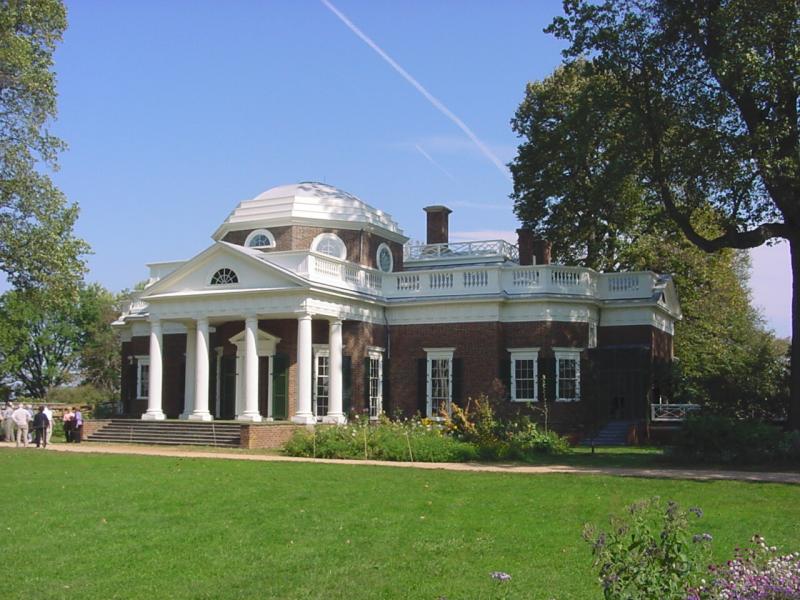
We drove north on Skyline Drive from I-64 to U.S. Highway 33. To the west, in the Shenandoah Valley, is Augusta County as seen from Skyline Drive (below). The second Anthony Gholson (grandson of the first Anthony) lived there during the time of the Revolutionary War and was a member of Captain Tate’s Augusta County militia.
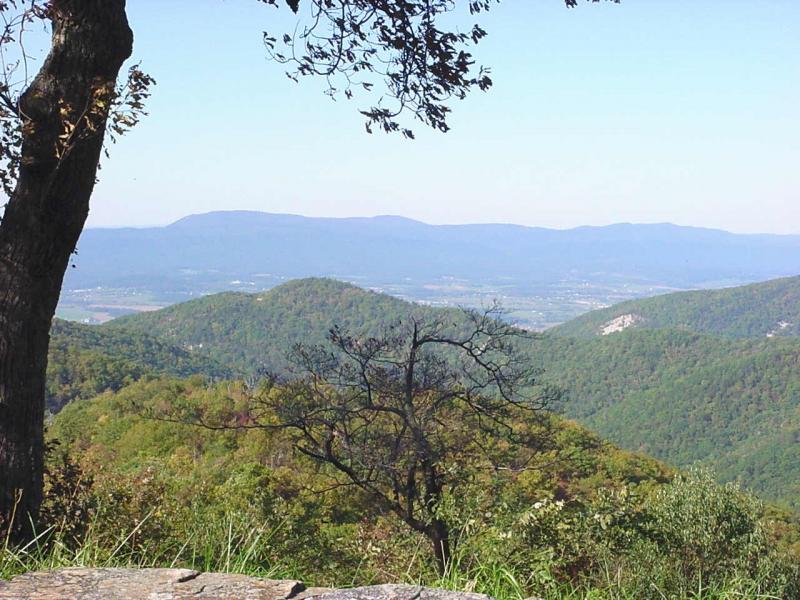
The second Anthony moved to Botetourt County around 1779 and lived in the area north of Roanoke before moving to Wayne County, Kentucky in 1801. In 1797, he was granted permission to build a grist mill on his land on the branch coming into Tinker Creek from the foot of Fullheart’s Knob (below). He bought 680 acres of land from Reverend Caleb Wallace and his wife Rosanna, whose brother was married to the sister of Patrick Henry.
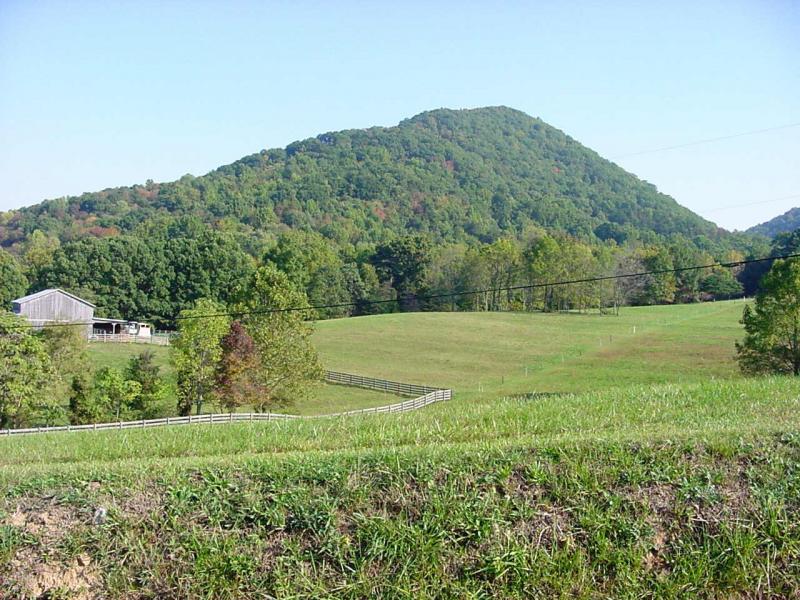
An 18 x 24 log house was built for the reception of deer skins and hemp, and Anthony was appointed inspector for the skins and hemp received, which were accepted as payment of taxes in the county. The location of this house was at or near the forks of the Carolina Road (below) and the original Carvin road.
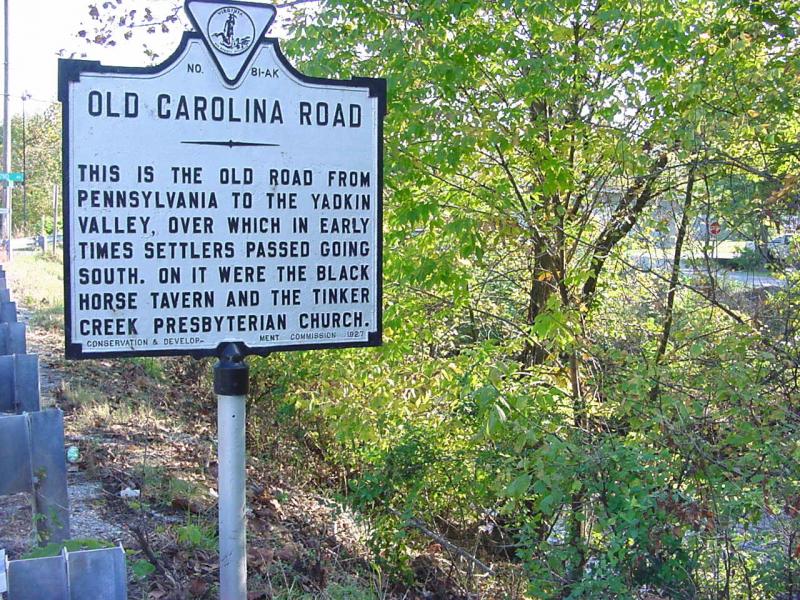
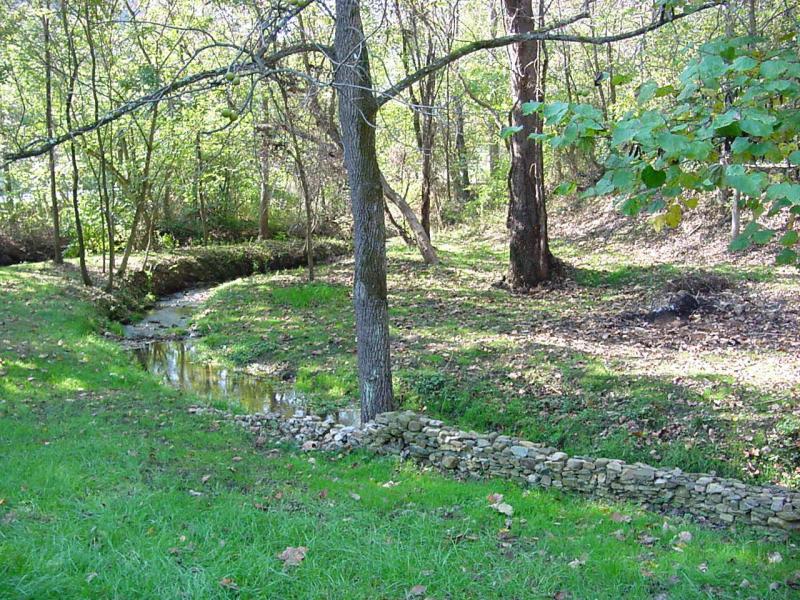
In driving along the old Carolina Road (now Highway 11 or Lee Highway) we had stopped to take photos of a small creek (above) when a van turned into a driveway near our parked car. We introduced ourselves to the driver and told him that we were interested in the history of the area. He graciously showed us around and took us to the creek where he had found what he believed to be the foundation of an old grist mill. It is entirely possible that the mill was Anthony’s, as the location fits the description in the original records. Anthony lived in the immediate area with his family for 22 years, then in 1801 followed Daniel Boone’s route, along with thousands of others who passed through Cumberland Gap (below).
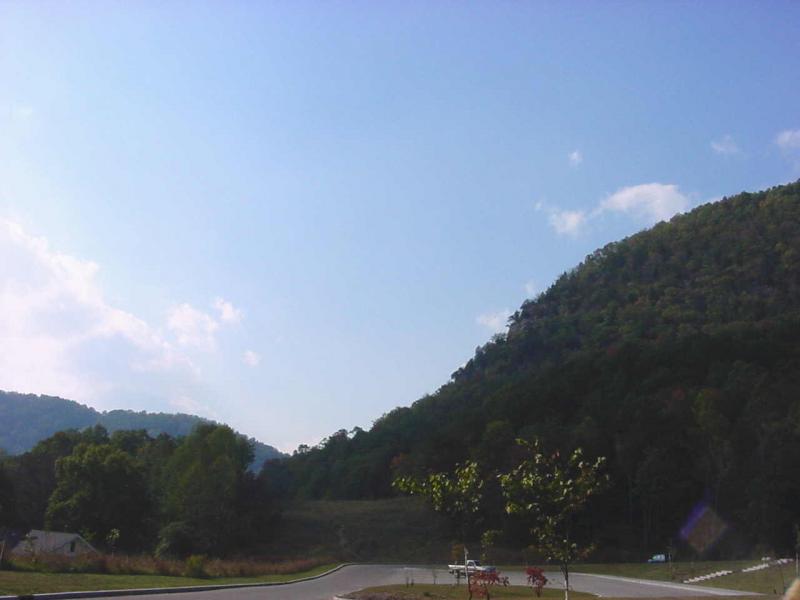
Facing East:
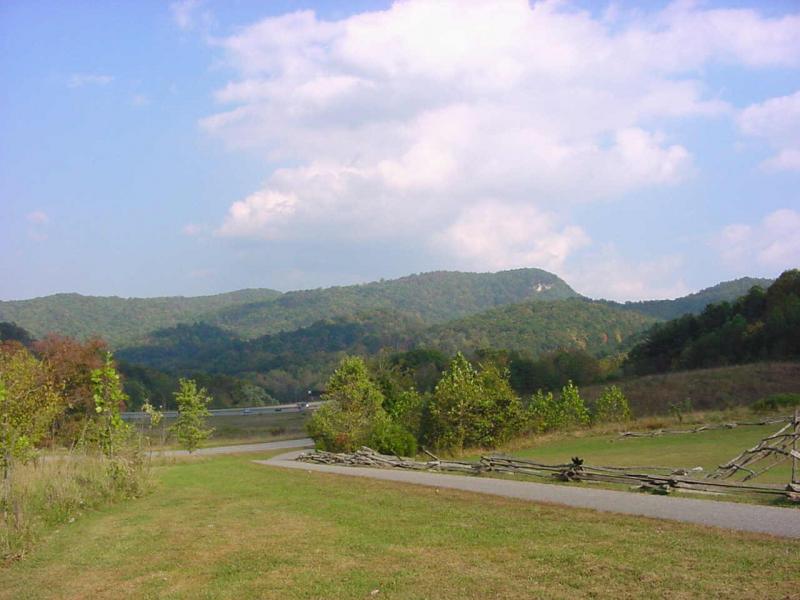
One of the places I most wanted to see on this trip was the location of Anthony’s home in Steubenville, Kentucky, and the Baptist church and cemetery for which he donated land. Steubenville Baptist Church has moved and the building is now the home of Pleasant Valley Baptist Church (below).
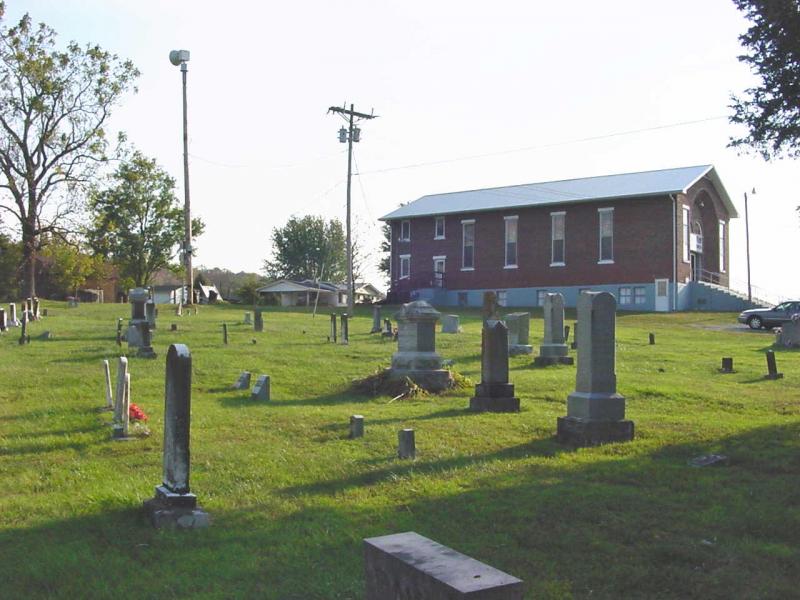
Anthony and his wife are buried in the cemetery beside the church (below), but the exact locations of their graves are unknown.
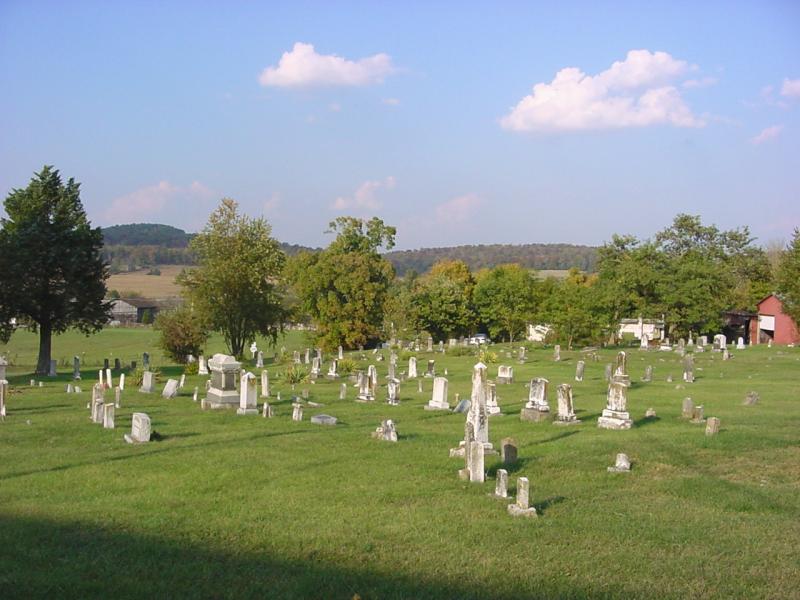
Anthony’s house was built in 1801 and stood until 1977, when it burned to the ground. A local resident told us that the chimney rocks from the house were used to build a retaining wall in front of a nearby house (below).
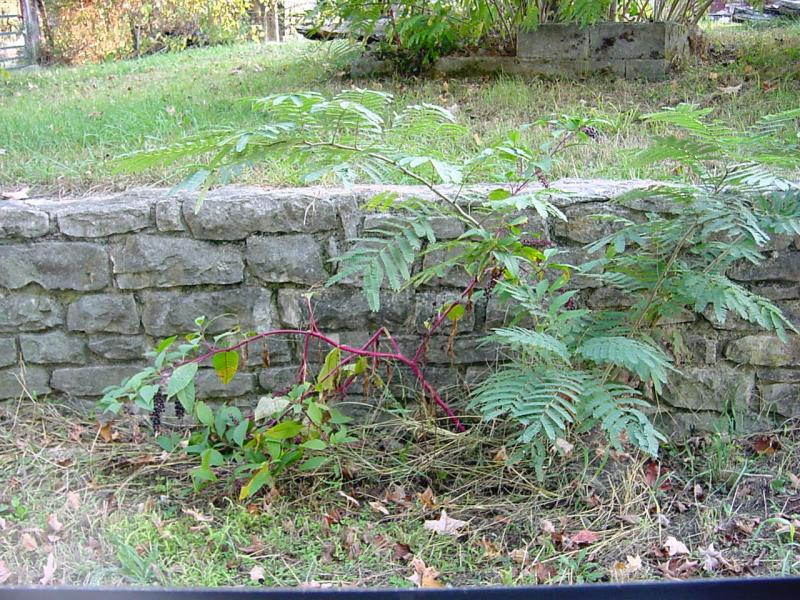
Armed with a map from the tax office in the courthouse, we were able to find the land where Anthony’s house stood. As I was walking around on the vacant lot, the neighbors came out of their house. I did not know whether I was going to be scolded or shot for trespassing, and it was a relief to learn that they were very nice, friendly people. The first photo below is a current view of the location of Anthony's house. The second is a view of the house as it appeared before it burned (photo courtesy of the Wayne County Historical Society).
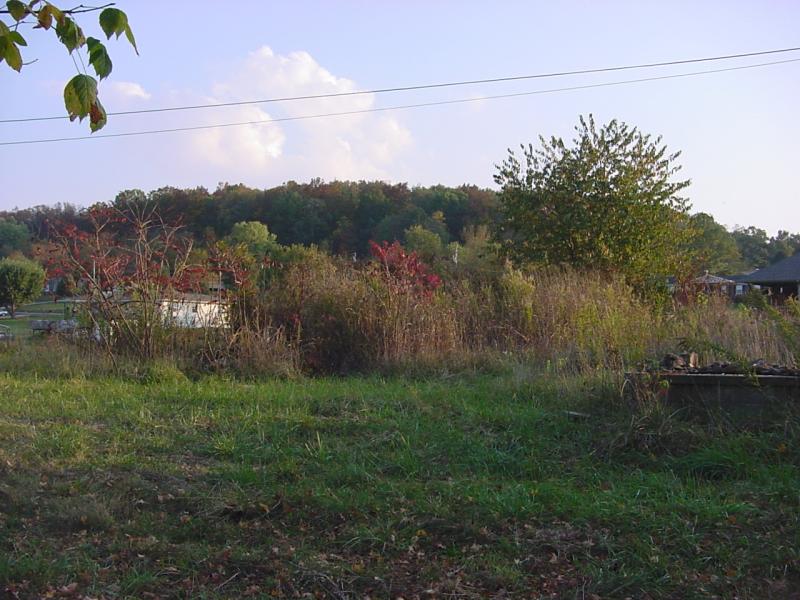
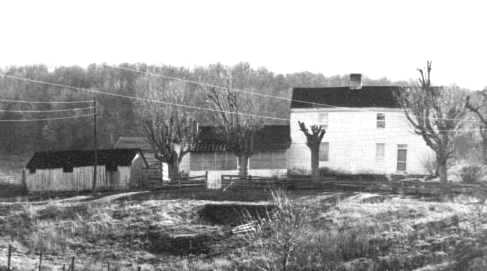
Note: Anthony's son Samuel moved to what later became Texas in 1832 with his son Albert. Samuel, his son, and his grandsons B. F. (Frank) Gholson and Sam S. Gholson were among the first Texas Rangers and early ranchers in Central Texas the subjects of my latest book, Gholson Brothers In the Thick of It--True Stories of Early Texas as Told by Two Who Lived It. Frank Gholson's house, built about 1875 near Evant, has been restored by historical architects David and Binnie Hoffman and is one of the gems of historical homes in Texas.
A special thanks to my husband Lew for indulging me and accompanying me as I chased the ghosts of my ancestors.
Donna Gholson Cook, Researcher and Compiler of Four Books so far:
Gholson Road--Revolutionaries and Texas Rangers;
Fritz and Annie Lippe Family--German Cotton Farmers in Early 1900s Texas, Washington, Mills, Hamilton and Tom Green Counties;
Annie's Story--Memories of My Grandmother;
and my latest:
Gholson Brothers In the Thick of It--True Stories of Early Texas As Told by Two Who Lived It
All books are available through Amazon.com and any bookstore can order them.
https://www.amazon.com/Donna-Gholson-Cook/e/B001K8U5UG?ref=sr_ntt_srch_lnk_1&qid=1626997147&sr=8-1
*****
The following article appeared in "Heart of Texas Records," Vol. 62, No. 2, Summer 2019, the quarterly publication of Central Texas Genealogical Society, pages 18-19.
GHOLSON BROTHERS IN THE THICK OF IT
True Stories of Early Texas as Told by Two Who Lived It
Soon to be published by ALIVE Book Publishing, Alamo, California
~
by Donna Gholson Cook, Sixth-Generation Texan and
Great-Granddaughter of Benjamin Franklin Gholson
This is the true story of several generations of Gholson family members who were in the middle of some of the most hair-raising events of early American and Texas history. Samuel, born in Virginia in 1772, moved to Kentucky in 1801 with his father’s family and was one of the Kentuckians who helped to defeat the British in the War of 1812, sometimes known as America’s second revolutionary war. He moved to Robertson’s Colony in what would become Texas in 1832 with his fourteen-year-old son Albert, who was still in his teens when he took part in several of the battles that resulted in Texas independence from Mexico, including the Battle of San Jacinto.
The Republic of Texas was formed in 1836, but the settlers had a new threat to fear. During the period of the Republic, Indian attacks were frequent. Many settlers were killed and many of their children were kidnapped. Albert was involved in an Indian battle after the Morgan Massacre and was a member of the burial party for the Navarro County surveyors killed by Indians.
Albert’s sons, Sam and Frank, were restless teenagers on their way to California when they were stopped by a group of soldiers who told them they would be killed by Indians if they went any further, so they returned with the soldiers and joined a new company of Texas Rangers. Soon after joining, they helped to bury the Jackson family who had been massacred by Indians, and then tracked the Indians for many miles to recover the two Jackson children who had been kidnapped.
In his third ranger term, Frank was a member of the company led by Sul Ross when they were involved in the Battle of Pease River and recaptured Cynthia Ann Parker, who was kidnapped as a child when most of the settlers in Fort Parker were killed by Indians. Frank was not present at the time of her capture, but he heard the details from those who were, and he was an eyewitness to her identification and related the story in wonderful detail with descriptions not found elsewhere.
Sam and Frank married two of the Langford sisters and both had large families. Sam’s wife died after her fourth child and he married Maggie Magness, and had twelve more. Sam and Frank became two of the most important cattlemen in early Texas and participated in trail drives during the brief period when the north needed beef and railroads had not yet been established. Sam spent the last 25 years of his life in New Mexico, and Frank built a two-story rock home near Evant, Texas, where he lived with his wife Adeline until he died in 1932. The house has now been beautifully restored by the Hoffmans, who have made it their home.
The stories in this book were obtained from the most reliable sources available, as recorded in interviews with the original participants whenever possible, enhanced by photos furnished by family members. As to the two brothers, Sam enjoyed a good fight and was sad to see those days end, as he wrote in his autobiography.
When I look back over what I am writing it makes me feel almost like a 'lost man' for nearly all of those good times and good friends are gone where no one has ever returned. I can't see ahead whenever the Indians and buffalo and cowmen and cowboys will mix up as they did in those days that I write about. Well, I would like to think the young generation would see such times as we did those days. Oh! Who wouldn't?
~ Samuel Sullivan Gholson, age 82, 1922
Frank was very different in both physical appearance and personality. He was known as a peacemaker and showed compassion for the Indians in several of his statements such as the following:
In 1859 these Indians were moved off this reservation [Fort Gibson], all of them, and they wasn’t willing to go. They was required to go with the assistance of the soldiers and two companies of rangers, who delivered them into the hands of the Indian agents, on the other side of the Red River.
I am of the opinion that right there things changed. I don’t believe them Indians had been doing anything to cause this move, but the majority of the people got to think they were. They were forced to go over there, and they had made their treaty to stay in Texas. I wouldn’t be surprised, then, if they didn’t depredate from then on.
~ Frank Gholson as Interviewed by Felix Williams, 1931
The following quotes are from Frank's obituary:
“‘Uncle’ Frank Gholson Passed Away Sunday,” Lampasas (Texas) Record, April 7, 1932.
One man who had known him for more than fifty years approached this writer at the cemetery and said, "I want to add just one thing to the notes you are taking and my name not be mentioned." Asked what he wanted to have said, he stated, "Uncle Frank was a peacemaker." He went on to say that he had been with him alone on many trips and in company on many occasions, and never had he heard Uncle Frank utter a disrespectful word of any human. But if differences arose between men or a group of men, "Uncle Frank would sacifice anything except principle for peace." What a tribute to anybody! . . .
His wide acquaintanceship in Central Texas and his active participation in the stirring events of an earlier day, together with his vivid and phenomenal memory of the details of the incidents of fifty, and even seventy-five years ago, made him invaluable in keeping the record of our earlier civilization authentic. . . . The book of his life is now closed, but if we had it in documentary or book form, it would be our priceless possession.
My hope is that the wish of the writer above has now been fulfilled. DGC
Gholson Brothers In the Thick of It will be available from Amazon.com and other booksellers this summer, 2019. www.gholson-cook.com
_____________________________________________________________
More of my published articles can be found in these journals/magazines:
“Bosque County Genealogical Society Journal” articles:
“Bosque County Genealogical Society Journal” Vol. 2, No.2, Apr-Jun 2020, pp. 22-27, “Sam Gholson & The Spikes-Gholson Feud” Submitted by Donna Gholson Cook, BCGS Member and Award Winning Author. Sam Gholson was the brother of Donna’s Great-Grandfather Benjamin Franklin Gholson.
“Bosque County Genealogical Society Journal” Vol. 2, No.3, Jul-Sep 2020, p. 9, “Thoughts on Being Quarantined” by Donna Gholson Cook, BCGS Member; Native Texan Transplanted to California.
and (same issue):
“Corrections: The Spikes-Gholson Feud—Fact or Fiction?” By Donna Gholson Cook, BCGS Member.
“Bosque County Genealogical Society Journal” Vol. 2, No.4, Oct-Dec 2020, pp. 19-25, “Lippe Family Military Service” by Donna Gholson Cook, BCGS Member.
“Bosque County Genealogical Society Journal” Vol. 3, No.1, Jan-Mar 2021, pp. 24-30, “Annie Lippe 1888-1992” by Donna Gholson Cook, BCGS Member.
“Bosque County Genealogical Society Journal” Vol. 3, No.2, Apr-Jun 2021, pp. 16-21, “Gholson Family Migration” by Donna Gholson Cook, Editor and Compiler of Gholson Road, Gholsons in Early America, and Gholson Brothers in the Thick of It.
_______________________________________________________________
Central Texas Genealogical Society “Heart of Texas Records” articles:
Central Texas Genealogical Society, “Heart of Texas Records” Vol. 62, No.2, Summer 2019, pp. 18-19, “Gholson Brothers In the Thick of It” by Donna Gholson Cook, Sixth-Generation Texan and Great-Granddaughter of Benjamin Franklin Gholson.
Central Texas Genealogical Society, “Heart of Texas Records” Vol. 62, No.3, Fall 2019, pp. 9-13, “Chasing Gholson Ghosts Through Virginia and Kentucky, October 17-22, 2005,” by Donna Gholson Cook.
Central Texas Genealogical Society, “Heart of Texas Records” Vol. 62, No.4, Winter 2019, pp. 8-13, “Researching Gholson and Lippe Family Histories,” by Donna Gholson Cook.
Central Texas Genealogical Society, “Heart of Texas Records” Vol. 63, No.4, Winter 2021, pp. 3-9, “Albert Gholson, Part I” by Donna Gholson Cook.
Central Texas Genealogical Society, “Heart of Texas Records” Vol. 64, No.1, Spring 2021, pp. 3-10, “Albert Gholson, Part II” by Donna Gholson Cook.
Central Texas Genealogical Society, “Heart of Texas Records” Vol. 64, No.2, Summer 2021, pp. 5-11, “Albert Gholson, Part III” by Donna Gholson Cook.
_____________________________________________________________
“Kerr County People” magazine article:
“Kerr County People” magazine, Jan-Feb 2020, pp. 28-31, “Homegrown Gratitude” by Donna Gholson Cook.
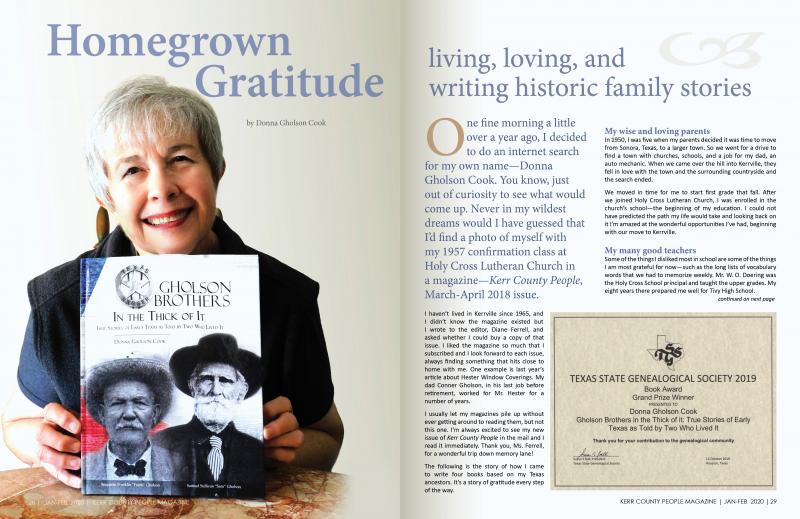
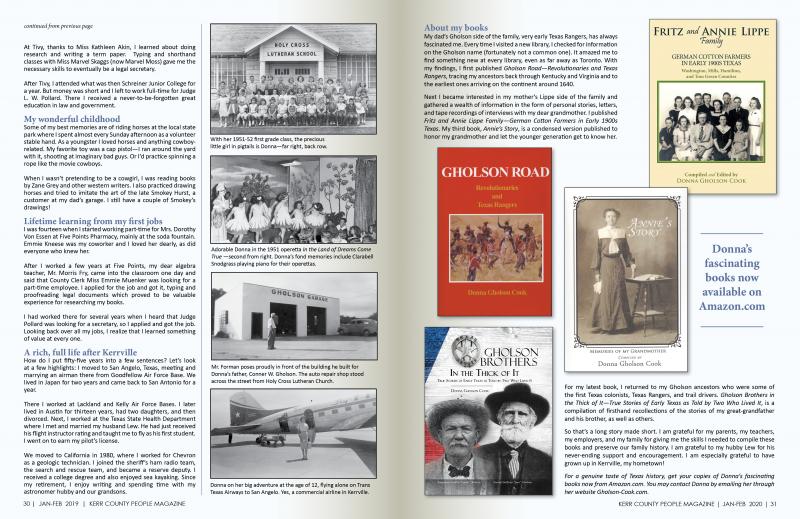
Copyright 2017, 2021, Donna Gholson Cook. All rights reserved.